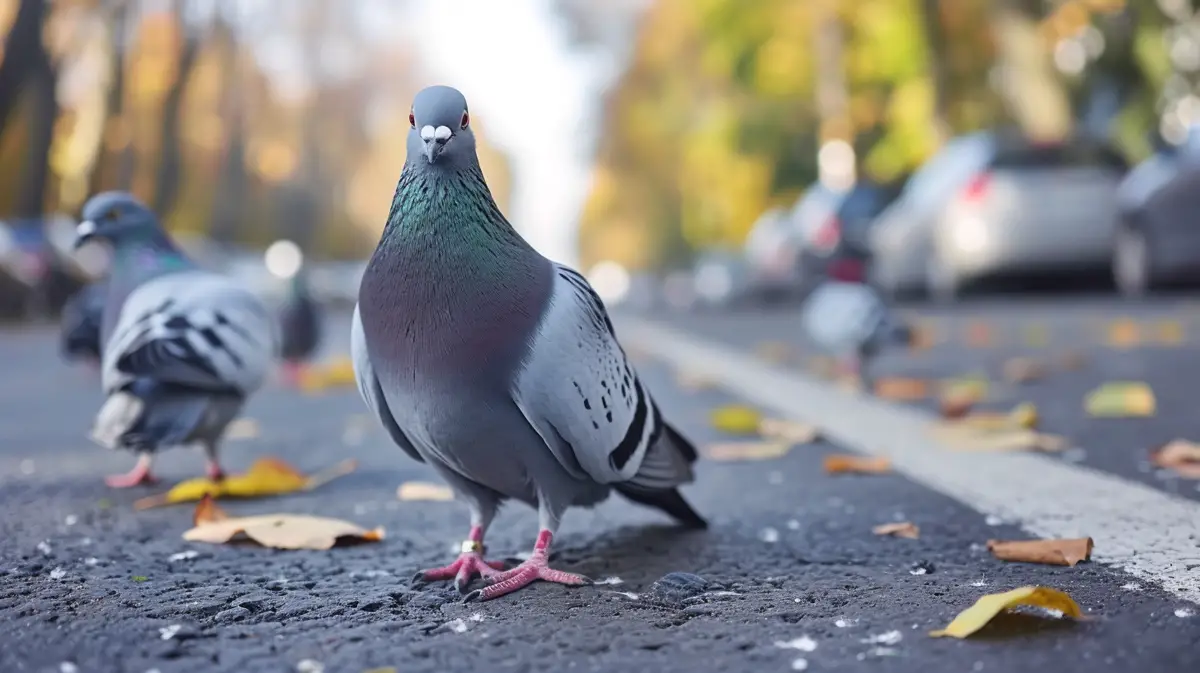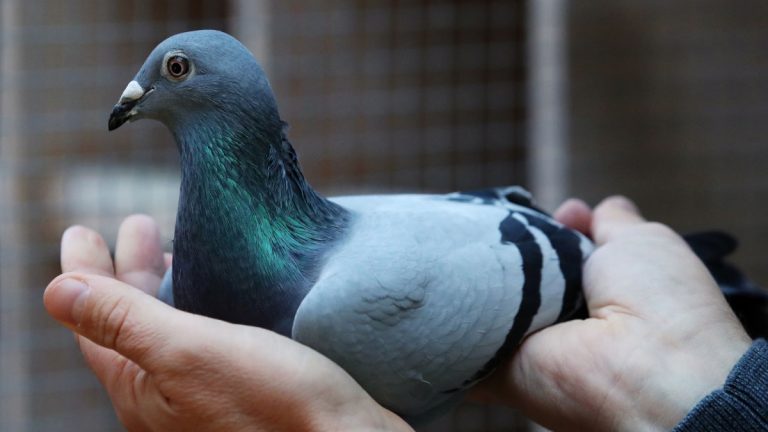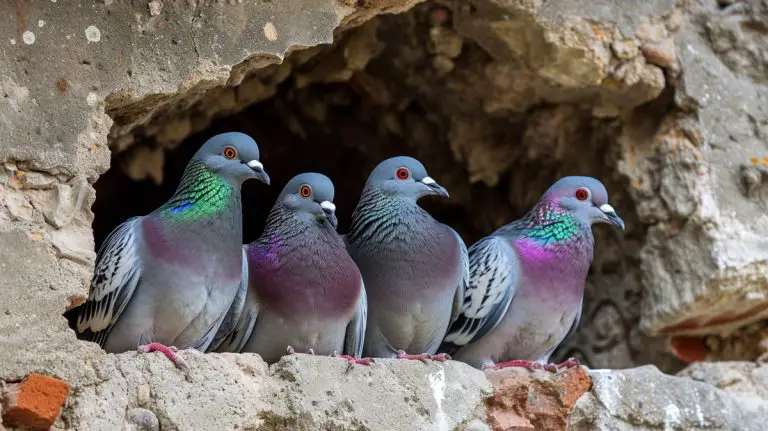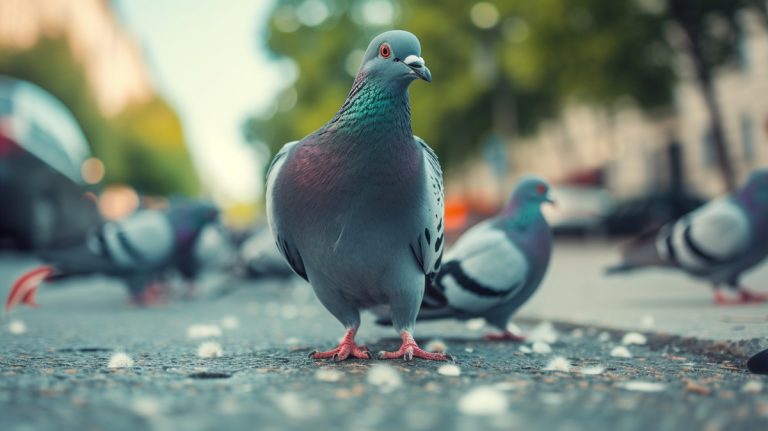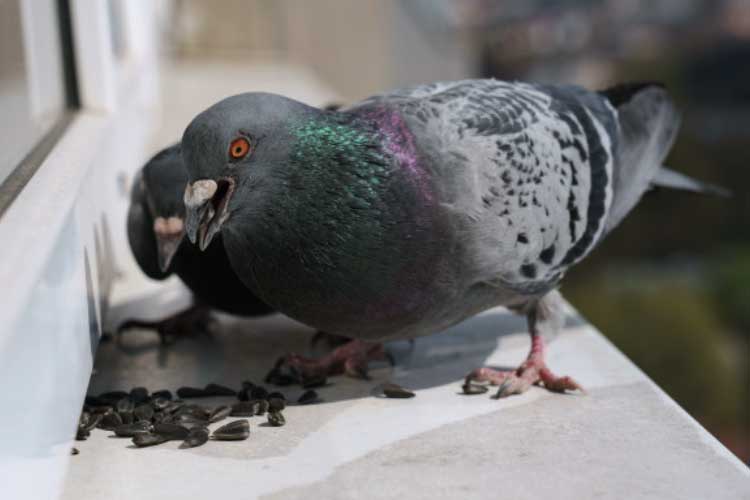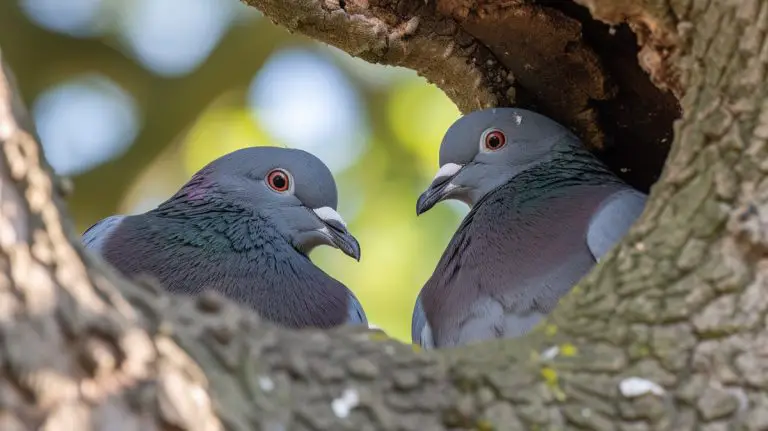Pigeon Tick Prevention: Strategies to Eliminate Infestations
Have you ever noticed those pesky little bugs crawling on pigeons? Well, those are called pigeon ticks, and they can be quite a nuisance. As an expert in pest control, I have encountered my fair share of these tiny creatures, and let me tell you, they are more than meets the eye. In this article, I’ll be diving into the world of pigeon ticks, exploring their behavior, the risks they pose, and most importantly, how to get rid of them. So, if you’re ready to learn more about these unwelcome guests, let’s get started!
Pigeon ticks may be small, but they can cause big problems. These blood-sucking parasites are not only a threat to pigeons but can also pose a risk to human health. As someone who has dealt with these critters firsthand, I can assure you that prevention is key when it comes to avoiding an infestation. In this article, I’ll be sharing some expert tips and tricks to keep your surroundings tick-free and protect yourself from the potential diseases they carry. So, if you’re ready to take control of the situation, keep reading!
The World of Pigeon Ticks
Pigeon ticks are small bugs that can be found on pigeons. In this section, I will delve deeper into the world of pigeon ticks, exploring their behavior and the risks they pose. By understanding more about these pests, we can better protect ourselves and our surroundings from potential infestations.
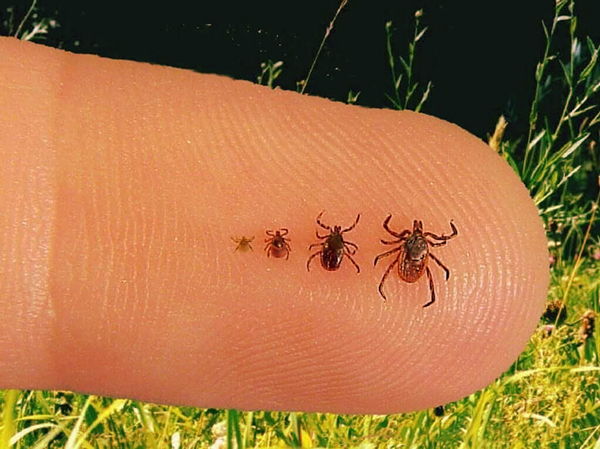
Behavior of Pigeon Ticks
Pigeon ticks are ectoparasites, which means they live on the exterior of their host (in this case, pigeons) and feed on their blood. These tiny insects can quickly multiply and form large populations. Once pigeons become infested with ticks, it’s only a matter of time before the pests spread to surrounding areas.
Risks of Pigeon Tick Infestations
Pigeon ticks pose risks to both pigeons and human health. For pigeons, the constant blood loss from tick feeding can weaken them, leaving them susceptible to other diseases and infections. Humans, on the other hand, can experience allergic reactions, skin irritations, and even transmit diseases carried by pigeons through tick bites.
Preventing Pigeon Tick Infestations
Prevention plays a key role in avoiding a pigeon tick infestation. It is essential to take proactive measures to keep our surroundings tick-free. Here are some expert tips to consider:
- Maintain Proper Hygiene: Keep your living or working space clean and free from leftover food or debris that may attract pigeons.
- Seal Entry Points: Ensure that any entry points, such as cracked windows or gaps in buildings, are properly sealed to prevent pigeons from entering.
- Remove Nesting Sites: If you notice pigeon nests around your property, remove them promptly to discourage pigeons from settling in the area.
- Install Deterrents: Implement deterrents, such as spikes or netting, to discourage pigeons from roosting on buildings or structures.
By taking these preventive measures, we can significantly reduce the chances of a pigeon tick infestation. However, if you suspect an infestation or are unsure of how to deal with it, it’s best to seek professional pest control services.
Remember, understanding the behavior of pigeon ticks and being proactive about prevention is crucial in keeping ourselves and our surroundings tick-free.
Understanding Pigeon Tick Behavior
As an expert in the field, I have spent years studying and researching the behavior of pigeon ticks. Understanding their behavior is crucial for effective prevention and control strategies. In this section, I will share some key insights into pigeon tick behavior to help you better understand these pests.
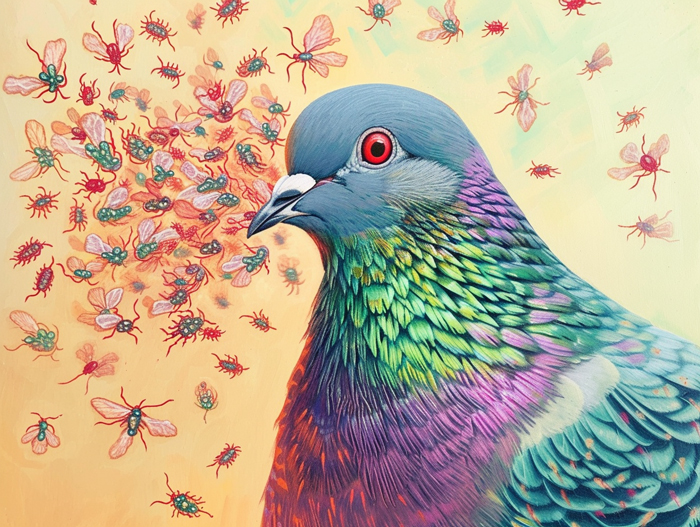
1. Host Preference: Pigeon ticks are specifically adapted to infest pigeons. They rely on these birds as their primary hosts for blood meals and reproduction. However, they can also bite and infest humans and other animals if they come into close contact with infested pigeons or their nests.
2. Life Cycle: Pigeon ticks undergo a four-stage life cycle: egg, larvae, nymph, and adult. The entire life cycle typically takes around 8-12 weeks to complete, depending on environmental conditions. Female ticks need a blood meal in each stage to progress to the next.
3. Behavior Patterns: Pigeon ticks are highly mobile and can crawl quickly from one location to another. They are most active during the warmer months, with peak activity in spring and summer. These pests are typically found in areas with high pigeon populations, such as rooftops, attics, and buildings near nesting sites.
4. Disease Transmission: Pigeon ticks are known carriers of various pathogens and can transmit diseases to both pigeons and humans. Some of the diseases associated with pigeon ticks include avian spirochetosis, tick-bite fever, and dermatitis. Therefore, it’s crucial to take measures to prevent tick infestations to safeguard both human and pigeon health.
5. Prevention Strategies: To effectively prevent pigeon tick infestations, it’s essential to eliminate or minimize the pigeons’ presence and access to potential nesting areas. Some effective prevention strategies include:
- Installing bird spikes or netting to deter pigeons from roosting.
- Sealing up any cracks or openings in buildings to prevent pigeon entry.
- Regularly cleaning and inspecting areas prone to pigeon activity, such as rooftops and attics.
- Removing any pigeon nests and cleaning up droppings promptly.
By understanding the behavior of pigeon ticks, you can take proactive steps to prevent infestations and keep your surroundings tick-free. Remember, prevention is always better than attempting to control an established infestation.
Next, I will share some expert tips on how to effectively keep your surroundings tick-free. Stay tuned!
The Risks of Pigeon Ticks
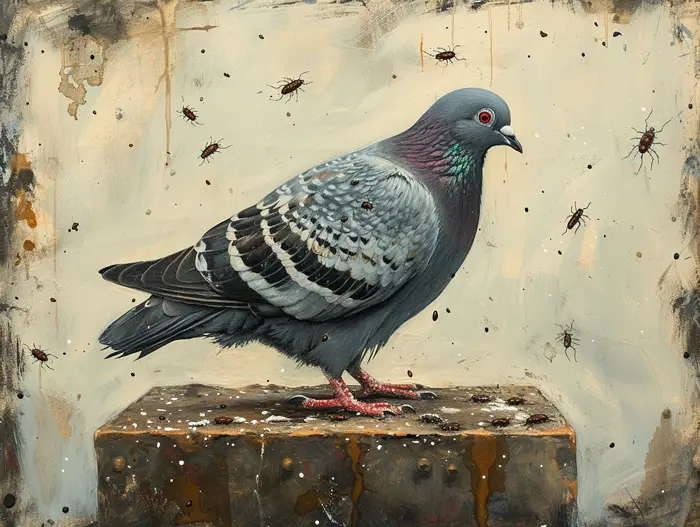
As I delve deeper into the topic of pigeon ticks, it becomes apparent that these little pests can pose several risks. Understanding these risks is essential for developing effective prevention and control strategies. Here are some key points to consider:
- Disease Transmission: Pigeon ticks are known carriers of various diseases, making them a significant health concern. These parasites can transmit pathogens to humans and other animals through their bites. Some of the diseases associated with pigeon ticks include Lyme disease, Rocky Mountain spotted fever, and tick-borne encephalitis.
- Allergic Reactions: For some individuals, being bitten by a pigeon tick can trigger an allergic reaction. Symptoms can range from mild skin irritation and redness to more severe reactions like swelling, itching, and difficulty breathing. It’s crucial to be aware of these potential allergic reactions and take necessary precautions to avoid them.
- Secondary Infections: Scratching the bite site can create open wounds, which can increase the risk of secondary infections. Bacteria can enter the broken skin, leading to infections such as cellulitis or impetigo. These infections can cause additional discomfort and may require medical treatment.
- Discomfort and Irritation: Pigeon ticks can cause significant discomfort and irritation due to their bites. The itching and irritation can be bothersome, affecting daily activities and quality of life. It’s important to address infestations promptly to minimize these unpleasant symptoms.
Prevention and control measures are crucial to mitigate the risks associated with pigeon ticks. By understanding their behavior, life cycle, and preferred hosts, we can develop effective strategies to prevent infestations and protect ourselves from the potential dangers these pests pose.
Remember, being proactive and knowledgeable about pigeon ticks can go a long way in maintaining a safe and healthy environment. Stay vigilant and take appropriate steps to prevent pigeon tick infestations. Together, we can minimize the risks and ensure the well-being of ourselves and those around us.
How to Get Rid of Pigeon Ticks
Pigeon ticks can be a nuisance and pose potential health risks. If you’re dealing with a pigeon tick infestation, here are some steps you can take to get rid of them:
- Identify and target the areas: Start by locating the areas where pigeon ticks are present. This could be around pigeon nests, roosting sites, or areas where pigeons frequently gather. By identifying these spots, you can focus on applying control measures more effectively.
- Clean and sanitize: Pigeon ticks thrive in dirty, unhygienic environments. Start by thoroughly cleaning and sanitizing the affected areas, including removing any bird droppings, feathers, or debris. A clean environment makes it less appealing for the ticks to stay.
- Eliminate pigeon nesting sites: If you have pigeon nests around your property, it’s important to remove them. Pigeon nests are prime breeding grounds for ticks. Take precautions while removing the nests or consider seeking professional help.
- Seal entry points: Pigeon ticks can enter your premises through small cracks, holes, or gaps. Seal these entry points to prevent further infestation. Use caulk or other suitable materials to seal any openings in your walls, windows, or doors.
- Use pesticides or insecticides: While natural remedies may be preferred, in severe cases, using pesticides or insecticides specifically designed to target ticks may be necessary. Read and follow the instructions carefully and take precautions to protect yourself and others while using these chemicals.
- Maintain cleanliness: Regularly maintain cleanliness and hygiene in and around your property. This includes cleaning up any spilled food, keeping garbage cans sealed, and preventing standing water, as these can attract pigeons and provide breeding grounds for ticks.
Remember, prevention is key when it comes to dealing with pigeon ticks. Taking proactive measures to deter pigeons from roosting or nesting on your property can greatly reduce the risk of tick infestations.
By following these steps and implementing preventive strategies, you can effectively manage and eliminate pigeon tick infestations.
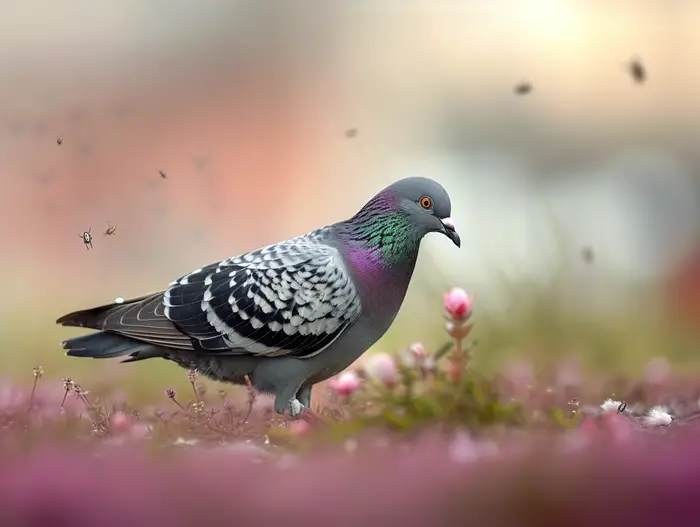
Preventing Pigeon Tick Infestations
Ticks are not only a nuisance but can also pose health risks, especially when they infest our living spaces. To keep our homes and surroundings tick-free, it’s important to take preventive measures. Here are some effective strategies to prevent pigeon tick infestations:
- Eliminate Attractive Areas: Ticks, including pigeon ticks, thrive in dark and damp environments. By removing their preferred habitats, we can discourage their presence. Here’s what you can do:
- Seal Entry Points: Preventing ticks from entering your home is crucial in keeping them at bay. Make sure to:
- Ensure Proper Sanitation: Good hygiene practices play a vital role in preventing tick infestations. Follow these steps to maintain cleanliness:
- Use Tick Repellents: Applying tick repellents can be an effective additional measure in preventing infestations. Consider the following options:
- Regular Maintenance: Consistent upkeep is key to preventing pigeon tick infestations. Make sure to:
Remember, prevention is always better than dealing with a tick infestation. By implementing these preventive measures, you can significantly reduce the risk of pigeon tick infestations in your surroundings.
Conclusion
Preventing and managing pigeon tick infestations is crucial for maintaining a healthy and pest-free environment. In this article, I have discussed various strategies to help you combat these pesky parasites.
By eliminating attractive areas for ticks and sealing entry points, you can significantly reduce the chances of infestations. Additionally, ensuring proper sanitation and conducting regular maintenance will further discourage pigeon ticks from taking up residence.
Using tick repellents is another effective method to keep these pests at bay. Whether it’s natural or chemical-based repellents, finding the right one for your needs can provide an added layer of protection.
Remember, prevention is key when it comes to pigeon ticks. By implementing these strategies and staying proactive, you can successfully manage and eliminate infestations, creating a safer and healthier environment for yourself and those around you.
